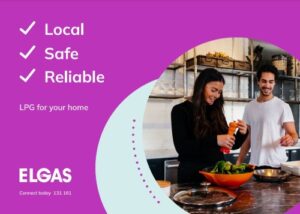What Size and How Many Gas Bottles?
“What size and how many gas bottles do I need?” is one of the most common questions we hear.
But before we get into discussions about size, we need to discuss delivery.
There are 2 types of delivery for LPG — gas bottle exchange & tanker refill…
How Many and What Size LPG Gas Bottles Do I Need?
In summary:
• The primary criteria for selecting the size and quantity of gas bottles installed should be the service considerations.
• Or, in other words, you never want to run out of gas.
• Two gas bottles allow you to use up all of the gas in the first bottle whilst having time to get a refill or an exchange replacement.
• 45kg LPG gas bottles are the most popular size because they can be either refilled via an LPG tanker or exchanged with another depot filled bottle.
$100 Off First Two 45kg Gas Bottles
2-Year Fixed or Variable 45kg Gas Bottle Price
Two LPG Delivery Choices
With gas bottle exchange, your empty gas bottles are exchanged for full ones by the delivery driver.
With automatic tanker delivery, the gas bottles stay in place and an LPG tanker comes to your home to refill your gas bottles in place.
Gas Bottle Exchange Service
With an exchange service, you typically get two 45kg gas bottles.
The 45kg size is used because they can be moved around by the delivery driver without any special lifting equipment.
Never Run Out of Gas
The concept is that you call for a delivery when one gas bottle is empty, while you continue with an uninterrupted supply from the other gas bottle.
You should never run out of gas, as long as you remember to order when the first bottle becomes empty.
Automatic Tanker Refilling
 With tanker refill, you may have two 45kg gas bottles, one or two 90kg gas bottles or an even larger vessel, if you use a lot of gas.
With tanker refill, you may have two 45kg gas bottles, one or two 90kg gas bottles or an even larger vessel, if you use a lot of gas.
The size can be as large as required, because it does not have to be moved.
Another advantage of tanker refill is that the deliveries are often automatically scheduled by the supplier.
This means you don’t have to check gas bottles or even order gas. It’s all done for you.
There is one limitation with tanker refilling, in that the driver must have a clear line-of-sight between the gas bottles and the tanker.
If that is not possible, then you will need to go with the exchange service.
Help for New Users of Home LPG
If you are a first time user of home LPG, you will probably need additional guidance to explain how everything works.
Final Thoughts
It’s not so much about size, but how you fill them.
Combined with the number and type of LPG appliances you have, this will help determine the size and number of gas bottles you need for your home.
- Elgas to the Rescue with Helicopter LPG Delivery - November 14, 2024
- Outdoor Heaters: Outdoor Gas Heaters – Gas Patio Heater Guide - September 22, 2024
- LPG Meaning – LPG Means: What Does LPG Stand For - August 31, 2024
Steve Reynolds
Technical Consultant
Steve Reynolds is a leading expert in the LPG industry with over 22 years of experience. As part of the national management team at ELGAS, Steve ensures the safe and efficient storage, handling, and transportation of LPG. He serves as the lead investigator for incidents and collaborates with authorities on industry developments.
Steve is a technical advisor to Standards Australia and Gas Energy Australia (GEA), and an active member of the World LPG Association (WLPGA), contributing to global standards and technical reviews. He holds a BSc. (Hons) in Industrial Chemistry from UNSW and has held senior safety and technical roles at ELGAS, making him a trusted authority in LPG safety and standards.

.png)
